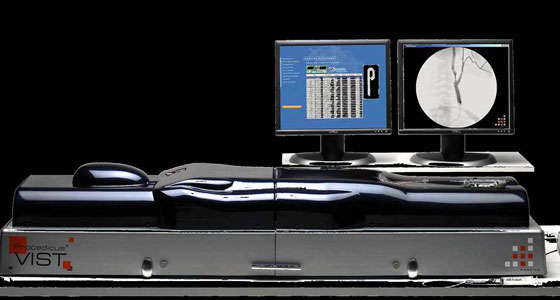A computerized catheterization simulator that helps guide surgeons in the invasive medical procedure arrived in Israel for two days as part of the "Catheterization Academy"
Avi Blizovsky, The People editor, DailyMaily

It looks like a hospital bed with a blanket on it, and behind it some wires and computer screens. In practice, it is a computerized simulator used to train surgeons dealing with cardiac catheterization, which Medtronic brought to Israel for two days as part of the so-called "Catheterization Academy". Last week, the senior catheterists gave the younger doctors a real-life experience in the system.
The combination between the doll and the computerized system allows doctors to fully practice the medical activity - not in a real patient's body, but in a simulation as close to it as possible. The "Catheter Academy" usually operates at the company's center, in Switzerland, but one of the instructors who also teaches at the same academy, Prof. Yosef Rosenman from Wolfson Hospital, was able to convince Medtronic to bring the facility to Israel, so that the Israeli doctors could also experience it without leaving the You have been on guard for too long.
During a demonstration held for DailyMaily, Prof. Rosenman explained that "the simulator is an accessory, a computer and a mannequin, whose purpose is to simulate an invasive operation in the field of interventional cardiology. The simulators in medicine come to give the possibility to guide doctors with prior experience in the simulator before experimenting on patients. In some cases it can be a substitute for experiments on animals, because it can give parameters of a skill that you would alternatively acquire either while working with humans, or while experimenting with animals."
What exactly can be done with the help of the simulator?
"The simulator is designed to simulate interventional catheterization in all its stages in various topics and situations, such as a heart attack, treatment of particularly complex patients, diabetic patients, complex narrowing of the heart arteries, treatment of multiple blood vessels, administration of drugs and implantation of stents. This, with the aim of practicing and researching different medical procedures before performing the operation on humans."
Doesn't it remind you of flight simulators?
"This technology came to medicine relatively late. It is much more developed in other fields, such as aviation, but the principles are similar and the intentions to a certain extent are similar, although in aviation the main consideration is saving expensive flight hours, in medicine this component is less important and improving treatment is the first priority.
This is an international program that is carried out mainly in Europe for surgeons who already work in hospitals but have not yet gained enough experience, and I was privileged to be one of the instructors in this program. This is the first time we are bringing this academy to Israel. Until now, doctors from various places in Europe, including doctors from Israel, would come to a training center in Switzerland. This time, all the simulators and content are brought to Israel, to give intensive training to a group of Israeli doctors who meet the definitions we mentioned.
The program was carried out over two days, when the training will be carried out in four groups. The principle is direct interaction between the instructor and the other participants, and the training itself includes a theoretical discussion of cases while clarifying the principles underlying the treatment of the patient, and practical experience in self-work in the simulator. In the whole process, we use real equipment found in catheterization rooms, and the feeling is very real."

One response
The Sheba Hospital in Tel Hashomer has an institute called Masar (Medical Simulation Institute/Center) where computerized medical simulation has been carried out for a long time.
I guess they don't have a cintor simulation but they have a lot of other simulations.